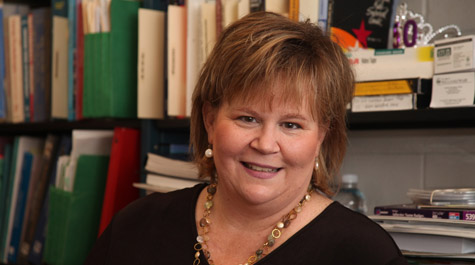W&M receives federal grant to expand science and engineering education
A College of William and Mary program to encourage science and engineering education in middle schools will now be taken to the national level after receiving $900,000 in federal funding.
The STEM Education Alliance at William & Mary's School of Education received the funding this month as part of its ongoing partnership with the Department of Defense's National Defense Education Program (NDEP). To date, the program, which works with school districts to encourage middle school students to explore careers in science, technology, engineering and mathematics (STEM), has received more than $3.8 million in federal support.
"William & Mary's STEM Education Alliance, with its partners at the Department of Defense and the U.S. Navy, are making a real difference," said William & Mary President Taylor Reveley. "This support will allow them to prepare even more young people to work effectively in scientific and technical fields."
Previously, the STEM Education Alliance (SEA), launched in partnership with the U.S. Navy in 2005 and expanded through support of NDEP, focused on middle schools in the Commonwealth of Virginia. The new funding will enable officials to expand its reach to eight states, including Virginia, and will also support two new initiatives, including an educational magazine for middle school teachers and the launch of the www.stemeducation.org Web site. In addition, the STEM Alliance is also working on a multi-year, multi-million-dollar funding proposal with the U.S. Navy's 21st Century Engagement, Education and Technology Program (21 CEETP). If approved, that proposal would enable the Stem Education Alliance program to expand to school districts in 20 states across the country.
"Our STEM program is part of an institution-wide commitment to reach out to middle and high schools to stimulate interest in vital fields," said Virginia McLaughlin, dean of the School of Education. "We realize that being scientifically literate and mastering critical 21st-century skills are key elements in our nation's effort to remain strong and prosperous. For that reason, these topics are included in all of our teacher-preparation programs and in various other curriculums, as well."
Under the direction of Gail Hardinge, clinical associate professor at the School of Education, William & Mary's STEM Education Alliance works with school divisions near Navy bases to develop curriculum programs. The goal, she said, is to improve student interest and attitude towards STEM careers, strengthen peer, family and school support, and increase the number of students taking college-preparatory mathematics and science courses.
"Through professional development, student and teacher mentoring and explicit plans for sustainability, our program has developed what we refer to as ‘effective strands in STEM instruction,'" she said. "We combine best teaching practices with terrific scientist-engineering support from the labs. The outcome is a dynamic problem-solving, hands-on approach to real world problems."
SEA currently has established programs in seven Virginia school divisions and works closely with the Naval Surface Warfare Center (located in Dahlgren, Va.), the Naval Surface Warfare Center at Dahlgren, Va., where students not only participate in school year programs, but attend a week-long summer session in problem solving with robotics, she said.
The program is offered free to all students within participating districts and also includes a variety of grant opportunities for schools, Hardinge added.
"Our outreach efforts for the coming year will include labs in Mississippi, South Carolina, California, Pennsylvania, Georgia and Rhode Island," she added. "We have served more than 9,000 Virginia students and look forward to expanding services to students across the country."
Thanks to the NDEP funding, STEM Education Alliance activities will also be enhanced by the new magazine and website. Featuring profiles of young scientists, engineers and mathematicians to serve as examples of what the careers entail, Explore magazine also contains practical information about how students can investigate the various fields at home and in school. The new website provides lesson plans, instructional materials and other information that teachers can use to introduce science, technology, engineering and mathematic concepts to students. The site also includes useful information for students, including a "tool kit" with links to sites that enable youngsters to undertake a variety of "civic science" programs to whet their intellectual appetite and to make a real contribution to science from their own homes.
The programs and partnerships with the Navy and Defense Department are part of an effort to enhance national security by helping inspire young students to consider careers in science, technology, engineering and mathematics.
"It is critical that we reach down to students in the elementary and middle-school years so that a clear pathway to STEM careers can be forged. Building a strong academic foundation begins in the earlier grades and is essential as the students build on this foundation to succeed in high school and beyond," said Bob McGahern, director of the National Defense Education Program's K-12 Pre-Engineering Program.
"While we know that not every student will choose to work at a Naval laboratory, we also know that well-educated and STEM-literate population of up and coming young women and men will strengthen this nation's science, technology, engineering and math capabilities as well as improve our ability to innovate new products and remain competitive in our increasingly global economy."
